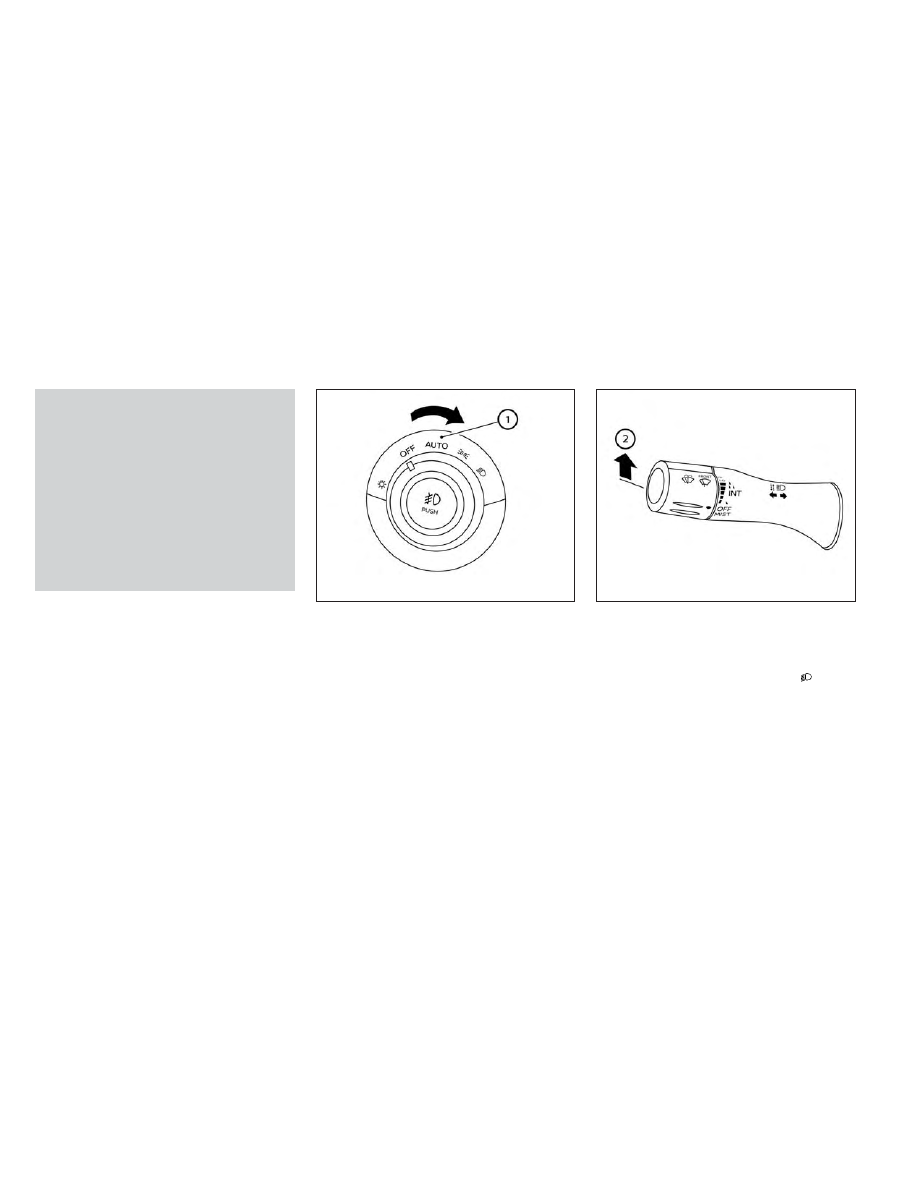Nissan Titan (2023 year). Manual in english - page 10

–
The movement and direction of
the oncoming vehicle and the
leading vehicle.
–
When only one light on the on-
coming vehicle or the leading ve-
hicle is illuminated.
–
When the oncoming vehicle or the
leading vehicle is a two-wheeled
vehicle.
–
Road conditions (incline, curve,
the road surface, etc.).
–
The number of passengers and
the amount of luggage.
High Beam Assist operation
To activate the High Beam Assist system,
turn the headlight switch to the AUTO po-
sition
O
1
and then push the wiper and
washer switch forward
O
2
(high beam po-
sition). The High Beam Assist indicator light
in the meter will illuminate while the head-
lights are turned on.
If the High Beam Assist indicator light does
not illuminate in the above condition, it may
indicate that the system is not functioning
properly. Have the system checked, it is
recommended that you visit a NISSAN
dealer for this service.
When the vehicle speed lowers to less than
approximately 16 mph (25 km/h), the head-
light uses the low beam.
To turn off the High Beam Assist system,
turn the headlight switch to the
posi-
tion or select the low beam position by
placing the lever in the neutral position.
LIC4324
LIC4333
Instruments and controls
2-49